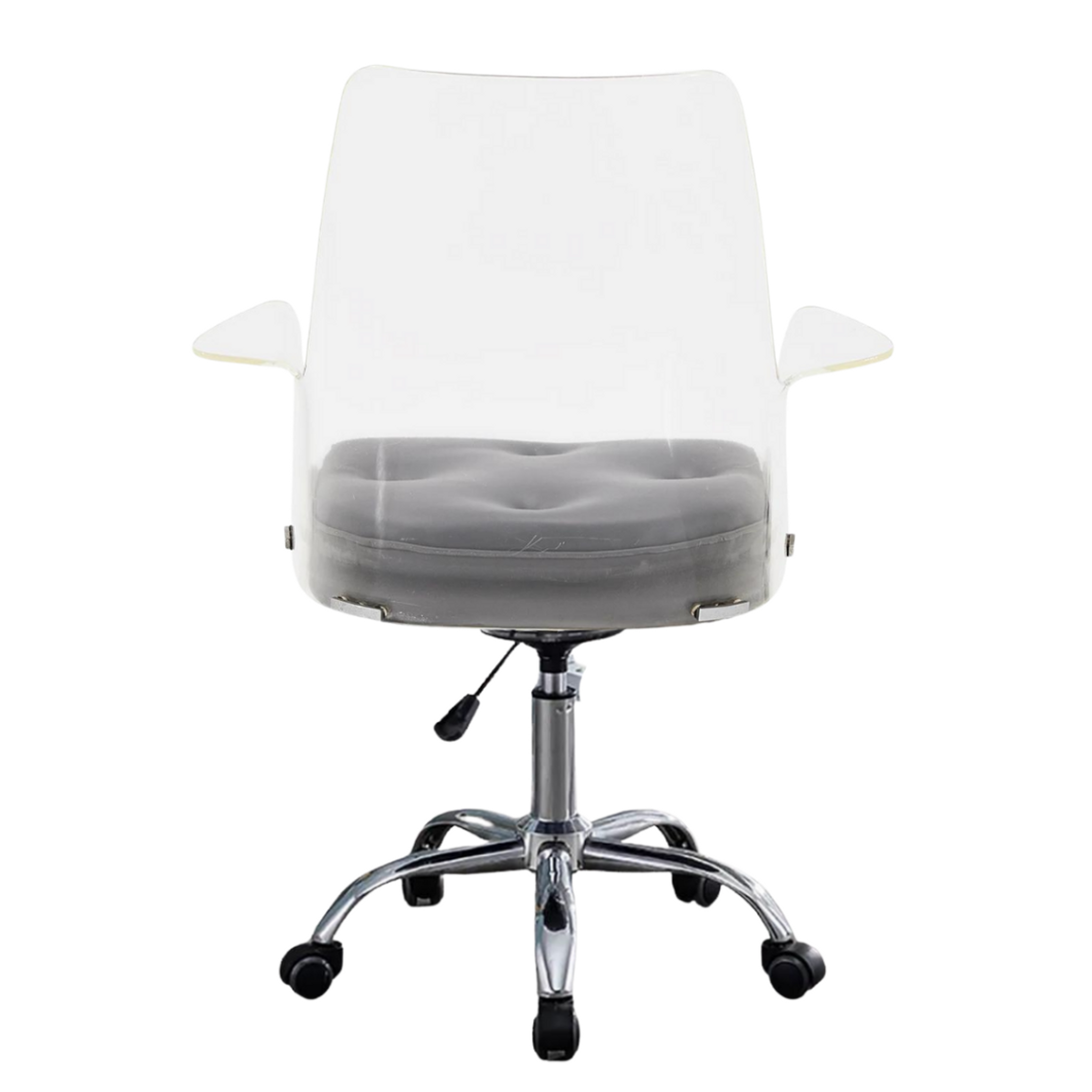Lucite Swivel Desk Chair

Lucite swivel desk chairs offer a modern aesthetic, often favored for their transparent design and sleek appearance. However, their functionality and ergonomic properties require careful consideration, particularly when compared to traditional office chairs. This analysis examines the ergonomic aspects of lucite chair design, compares their functionality to traditional counterparts, and addresses potential ergonomic issues and their solutions. Assembly instructions are also provided.
Ergonomic Considerations in Lucite Swivel Desk Chair Design
The transparent nature of lucite presents unique challenges in ergonomic chair design. Unlike opaque materials, lucite offers limited opportunities for built-in lumbar support or contoured seating. Therefore, ergonomic design must focus on external support mechanisms and adaptable features. Crucial considerations include the chair’s overall dimensions (seat height, depth, and back height) to accommodate a wide range of body types and postures. The seat pan should be designed to promote proper posture, ideally with a slight forward tilt to maintain the natural curvature of the spine. Adjustability in seat height and back angle is critical to allow users to personalize their seating position. Finally, the swivel mechanism must be smooth and stable, preventing jerky movements that could strain the user’s back or neck. The use of high-quality, durable components is essential to maintain the chair’s structural integrity and longevity, ensuring continued ergonomic support.
Functionality Comparison: Lucite vs. Traditional Office Chairs
The following bullet points compare the functionality of lucite swivel desk chairs to traditional office chairs:
- Advantages of Lucite Chairs: Aesthetic appeal; allows for visual spaciousness, particularly in smaller offices; often lighter weight than traditional chairs, facilitating easier movement.
- Disadvantages of Lucite Chairs: Limited ergonomic support features; lack of built-in lumbar support or adjustable armrests; potential for reduced durability and stability compared to some traditional designs; may lack breathability, leading to discomfort in warmer climates; less sound dampening than traditional upholstered chairs.
- Advantages of Traditional Office Chairs: Typically offer greater ergonomic support (adjustable lumbar support, armrests, headrests); usually more durable and stable; often provide better breathability and comfort; usually better sound dampening.
- Disadvantages of Traditional Office Chairs: Can be bulkier and less visually appealing than lucite chairs; may be heavier and more difficult to move; wider variety of styles and features can make selection more complex; cost can vary greatly.
Potential Ergonomic Issues and Solutions, Lucite swivel desk chair
Prolonged use of a lucite swivel desk chair can lead to several ergonomic issues. The lack of inherent lumbar support can cause lower back pain. This can be mitigated by using a separate lumbar support pillow or cushion. The lack of armrests can lead to shoulder and neck strain; this can be addressed by using armrests that attach to the chair or by ensuring proper desk height to allow the forearms to rest comfortably on the desk surface. Insufficient seat depth can cause pressure on the thighs and poor circulation; choosing a chair with an appropriately sized seat or using a seat cushion can alleviate this. The lack of breathability in lucite can cause discomfort in warm environments; this can be addressed by using a breathable seat cover or by ensuring proper ventilation in the workspace. Finally, inadequate adjustability can lead to poor posture; selecting a chair with adjustable height and back angle is paramount.
Assembly of a Typical Lucite Swivel Desk Chair
The assembly process varies depending on the specific chair model, but a general Artikel follows:
- Base Assembly: First, attach the five-star base to the hydraulic cylinder. This typically involves screwing the base onto the cylinder using provided bolts and a wrench or screwdriver. Ensure the base is firmly attached and that the cylinder moves freely. Imagine screwing a large nut onto a threaded cylinder, tightening until firm but not overly tight to avoid damage.
- Seat Attachment: Next, carefully attach the lucite seat to the top of the hydraulic cylinder. This often involves aligning the seat with the cylinder and securing it with a locking mechanism, perhaps a threaded ring or a clamping system. The mechanism will vary based on the design; refer to the manufacturer’s instructions. Visualize a circular seat fitting snugly onto a cylinder, secured by a ring that is tightened or clamped.
- Backrest Attachment (if applicable): Some lucite chairs have separate backrests. If so, align the backrest with the seat and secure it using the provided screws or fasteners. This may involve aligning holes or slots and tightening screws or inserting pins. Imagine aligning a curved backrest with the seat, and fastening it with bolts or screws.
- Optional Components: Finally, attach any optional components, such as armrests or headrests, following the manufacturer’s instructions. This may involve attaching parts using screws, bolts, or other fasteners. Think of this stage as adding additional elements to complete the chair’s assembly, securing them firmly to the chair’s structure.
